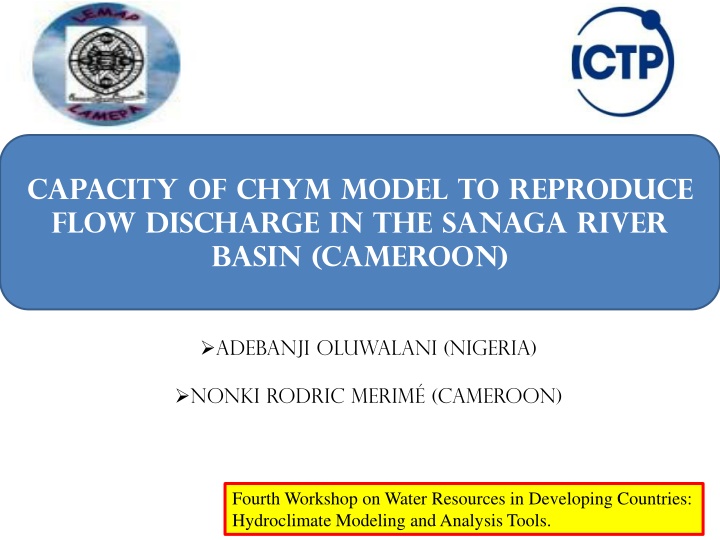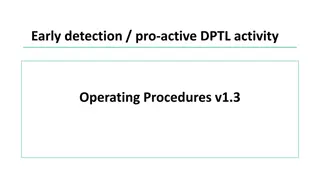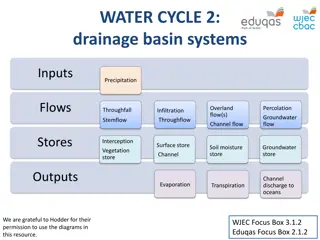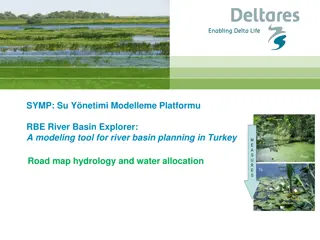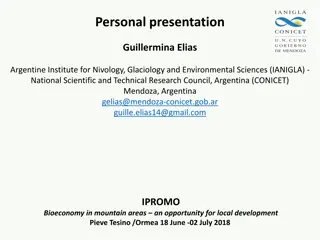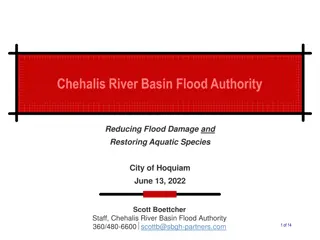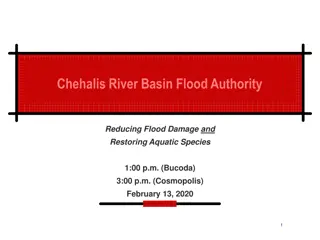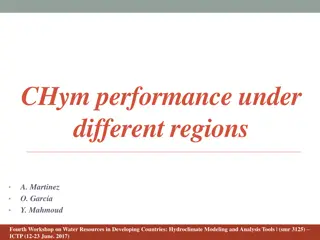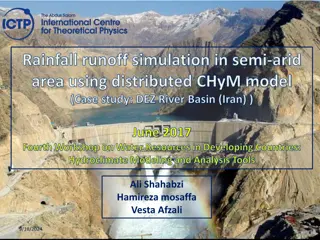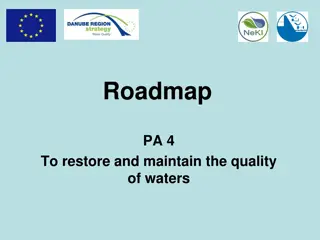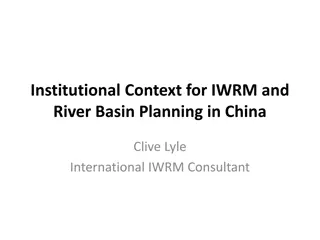Capacity of CHYM Model to Reproduce Flow Discharge in the Sanaga River Basin
In this study at the Fourth Workshop on Water Resources in Developing Countries, Adebanji Oluwalani and Nonki Rodric Merim analyze the capacity of the CHYM model to replicate flow discharge in the Sanaga River Basin, Cameroon. The study area, data collection, methodology, results, and conclusions are presented, highlighting the distribution of water resources and climate variations in Cameroon. The use of remotely sensed information and neural networks is discussed in assessing flow discharge accuracy. The findings shed light on the hydroclimate modeling in the region.
Download Presentation

Please find below an Image/Link to download the presentation.
The content on the website is provided AS IS for your information and personal use only. It may not be sold, licensed, or shared on other websites without obtaining consent from the author.If you encounter any issues during the download, it is possible that the publisher has removed the file from their server.
You are allowed to download the files provided on this website for personal or commercial use, subject to the condition that they are used lawfully. All files are the property of their respective owners.
The content on the website is provided AS IS for your information and personal use only. It may not be sold, licensed, or shared on other websites without obtaining consent from the author.
E N D
Presentation Transcript
capacity OF CHYM MODEL TO REPRODUCE FLOW DISCHARGE IN THE SANAGA RIVER BASIN (cameroon) Adebanji oluwalani (NIGERIA) NONKI Rodric Merim (cameroon) Fourth Workshop on Water Resources in Developing Countries: Hydroclimate Modeling and Analysis Tools.
Outline Introduction Study Area Data and Methodology Results and Analysis Conclusion
INTRODUCTION In Cameroon, water resources are unevenly distributed between North and South. The South part of territory up to 6N, enjoys a wet sub-tropical climate with annual rainfall between 1500 and 4000 mm and the North of this, there is gradual change leading to the arid sahelian zones in the northernmost (13N) part of the territory, with annual rain less than 400 mm (Mkankam, 2001). The same is true between seasons.
STUDY AREA AND DATA Lat: 3 22N - 7.22 N Lon: 9 45 E 14.57 They include: the altitudinal tropical climate of the Adamawa, the tropical climate, the equatorial climate, the coastal equatorial climate, the coastal tropical climate and the mountainous tropical climate of the West. This basin possesses a major surface water (Sighomnou, 2004) leading to the construction of three regulatory dams between 1969 and 1987 (Mbakaou, Mape and Bamendjin) and two hydroelectric dams (Songloulou and Edea). Presently, a fourth regulatory dam is undergoing construction at Lom Pangar. Fig. 1 - Location of the Sanaga basin in Cameroon and rainfall stations used (Kpoumi el al., 2012)
DATA and METHODOGY To achieve this work , we use We also use PERSIANN(The Precipitation Estimation from Remotely Sensed Information using Artificial Neural Networks) with 0.25 spatial resolution ERA-interim with 0.25 spatial resolution Daily observed Flow discharge Nash coefficient Relative Volume Bias n n Q = = = n ( ) 2 Q Q Q , , obs t sim t ( ) Q , , sim t obs t = (1) = 1 R 1 n t ( ) % (2) 100 BR 1 1 t t NS ( ) 2 n Q Q , obs t obs Q = 1 , t obs t Root Mean Square Error = 1 t n ( ) 2 Q Q , , obs t sim t (3) = = RMSE 1 t n
RESULTS ET ANALYSIS NASH Correlation coef PBIAS RMSE PERSIANN -0.88 0.599 8.52 850.74 ERAINT -3.57 0.488 4.44 1324.5
CONCLUSION CHyM model able to capture our Watershed. CHYM model simulated well some importants Characteristics of watershed CHyM model failed to reproduce flow discharge in our Watershed and need a calibratrion.
